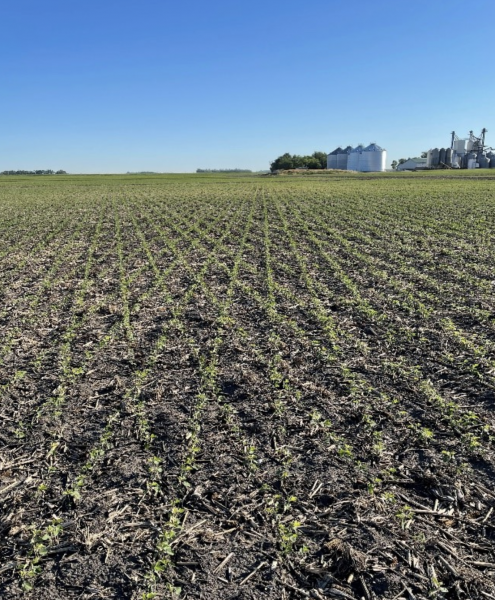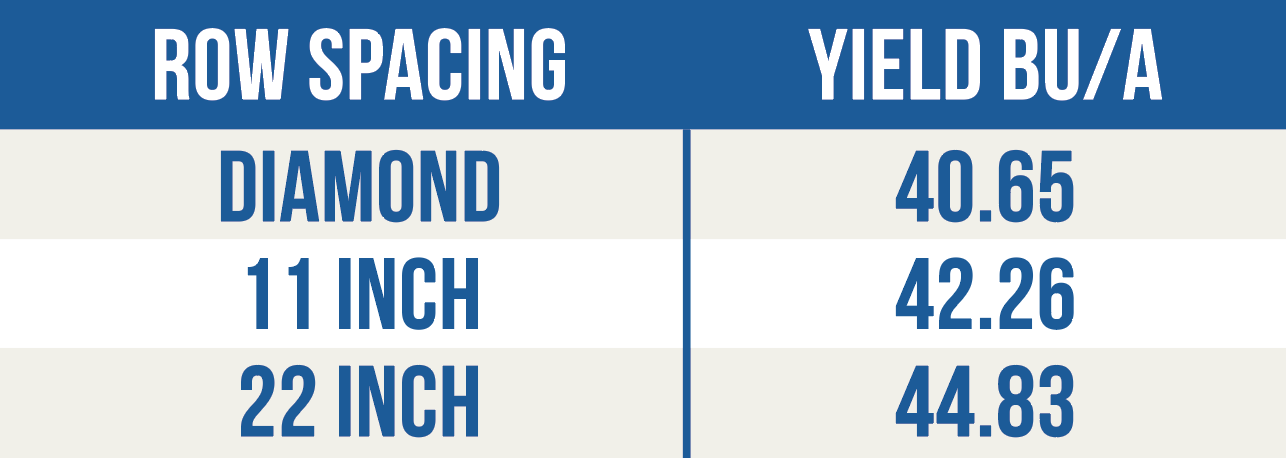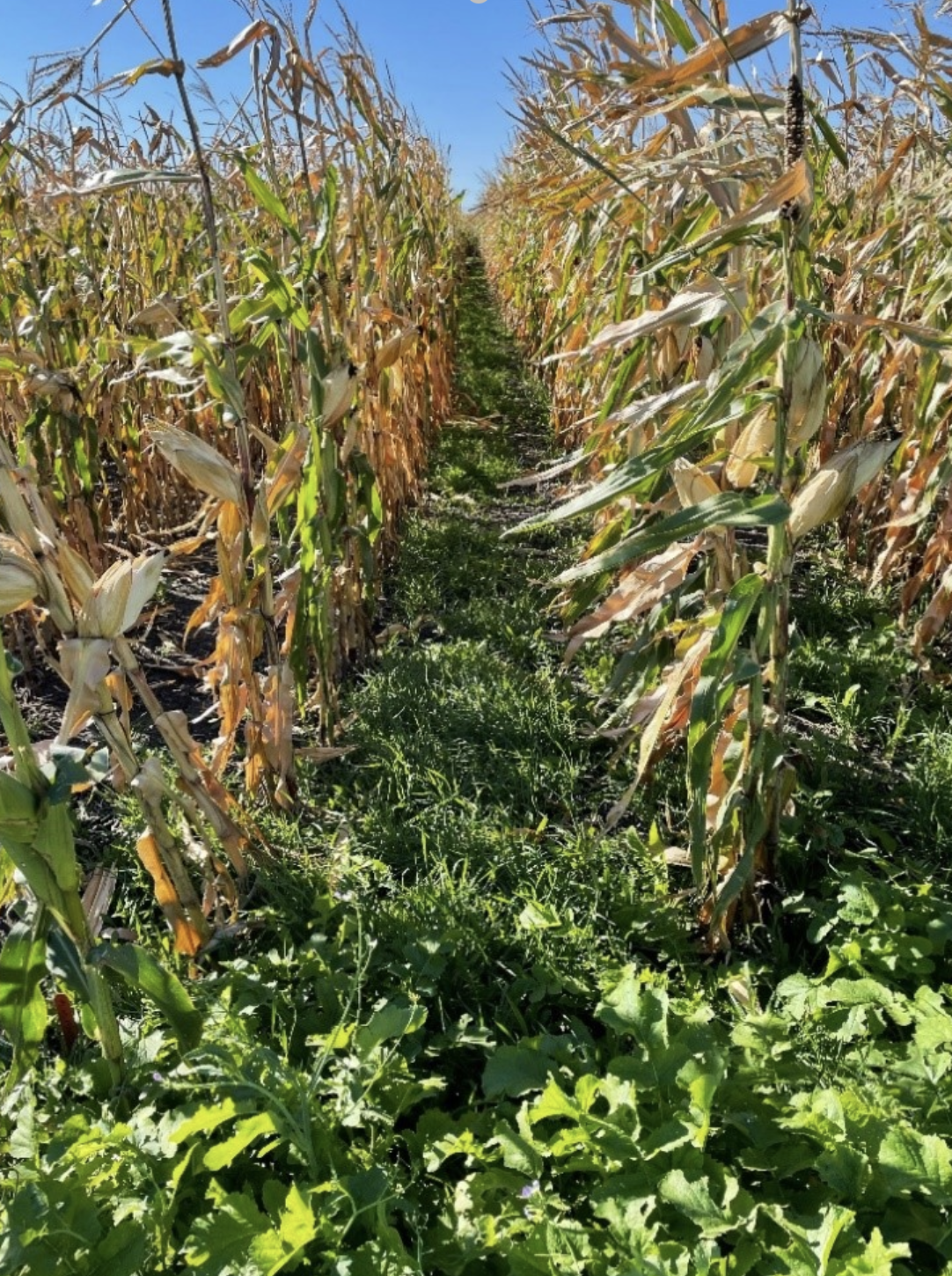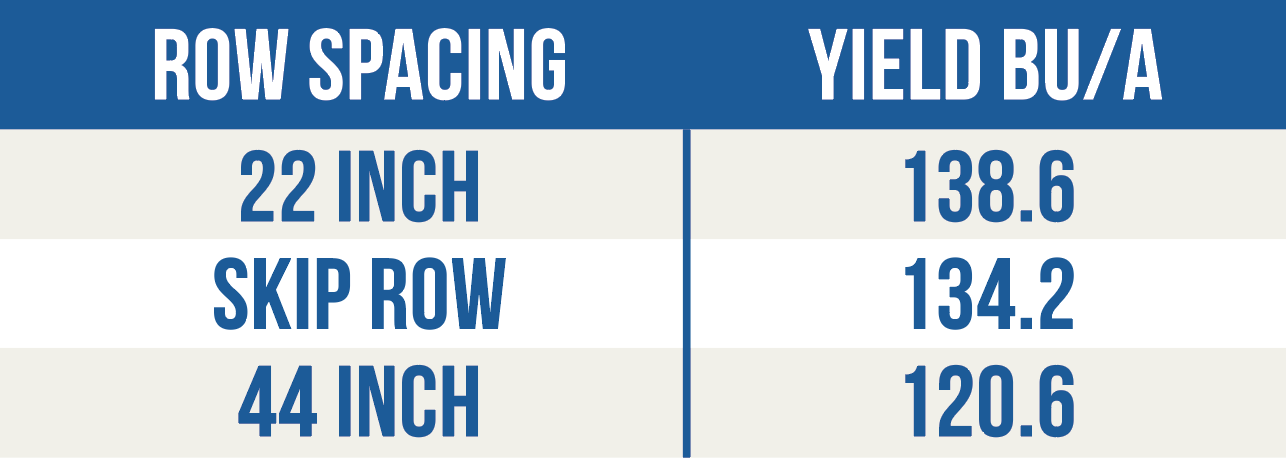Ole and Sven: What Row to Grow?

The rows looked slightly different this year in our Ole and Sven Plot. In addition to our traditional row spacing trials in both corn and soybeans, we added a third non-traditional experiment to both – diamond-pattern rows in soybeans and skip-rows in corn.
Our objective with our row spacing studies is to discover how row spacing affects yield and how spacing impacts canopy cover, whether to suppress weeds or establish cover crops.
Row Spacing Soybeans

The soybean spacings were 22in, 11in, and diamond pattern. The first two were meant to compare a planter and a drill setup, while the third was to try something a little different. We ran the planter across the plot twice to create the diamond pattern. We set a 15-degree heading on the first pass and planted at 75,000/acre. Then we came back with another pass at a 0-degree heading at the same population. The result was diamond–patterned soybeans planted at a population of 150,000/acre, the same population as the other trials.

This trial will require a couple more years of testing before we can draw definitive conclusions.
However, this trial may not be focused entirely on yield. The goal with the diamond rows is to close the rows sooner, reducing weed pressure from blocking sunlight early. Although that was the trial’s objective, there wasn’t a noticeable difference in weed pressure from 22in spacing to our diamond pattern.
I look forward to trying it again – primarily because of the appearance of soybeans planted in a diamond pattern. Look at this picture – who wouldn’t smile at that!
Row Spacing Corn

We knew the data from previous years had shown that 22in rows had significant yield advantage over 44in rows in corn. So we decided to include a skip–row trial to meet in the middle. Skip–row is alternating between 22in and 44in rows. Here‘s where the yields landed this year.

It appears skip-row spacing closed the yield gap between 44in and 22in spacing.
The skip-row yield still fell over four bushels behind 22in. But the idea behind the wide rows is to allow sunlight to break through the canopy to help establish a cover crop. Cover crops serve a dual purpose: soil health improvement and grazing cattle.
The cover crop mix of cereal rye, radish, flax, red clover, vernal alfalfa, and winter camelina was broadcast when the corn was at V8. And even with limited summer rainfall, we ended up with a remarkable cover crop stand.
We featured three row spacings with and without cover crops in this row spacing trial. In the end, the corn with cover crops yielded two bushels higher than the corn without cover crops.
I’m not ready to make the conclusion that cover crops lead to a yield bump. Instead, this leads me to believe that cover crops don’t create a yield hit. If we can show that yield can be maintained while growing covers, farmers can be confident to utilize them to improve soil health and cattle grazing.
These trials have caught growers’ attention as the abnormal appearance of the diamond-patterned soybeans and skip-row corn does not go unnoticed. Unfortunately, most of the other Ole and Sven trials are not this noticeable – but they are just as valuable.
Through our Ole and Sven trials, we’re working hard to keep up with the ever-evolving door of ag innovations. We do all this work so we can be a trusted resource for farmers who are looking to try new methods and products. Whether as simple as adjusting populations or as complex as incorporating cover crops, we plan to continue these trials to provide value and insights to our growers.











